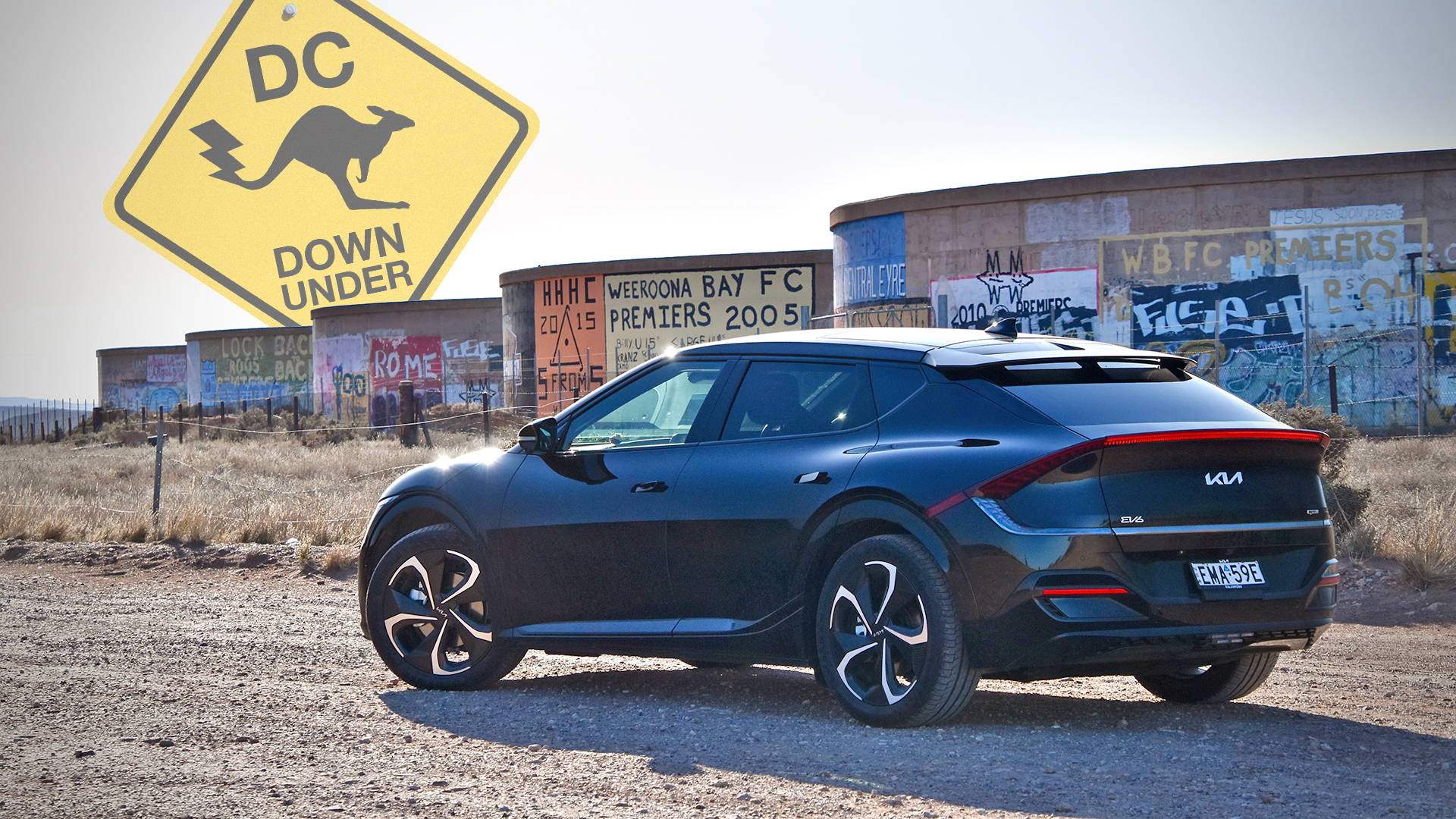

Thinking about and planning a long-distance drive through the Australian Outback in an electric car versus actually doing it are two very different things. The former calls for lots of planning and poring over maps; the latter leaves little room for uncertainty. But it was time to hit the road and get our bearings starting with me, Lewin, at the helm of our 2022 Kia EV6 AWD.
On paper, it’s not far from the perfect EV for such a long journey: The 77.4-kWh battery is big enough to bridge the gap between distant charge stops in rural Australia—the longest of which we’d face would be 234 miles—but not so oversized that it’d hurt efficiency and prolong recharging stops. Similarly, the advertised 274 miles of range gave us no cause for concern, either. Sure, range suffers at highway speeds, though not enough to make a difference, we thought. (Admittedly, we did take a spin around the internet to see what ranges others achieved and InsideEVs managed 254 miles in a test at sustained highway speeds.) So while we’d have preferred the single-motor model and its 36 extra miles of range, it should, in theory, have made no difference. And on the first leg, it didn’t.

[Welcome to project DC Down Under, where The Drive is sending the indomitable Lewin Day and James Gilboy across 1,700 miles of the Australian Outback over the span of five days in a Kia EV6. Electric cars in 2022 thrive in places where there’s a healthy number of public chargers; doing so across the Nullarbor Plain is another matter altogether. Follow along with Lewin and James’ journey on our Twitter and Instagram accounts with the hashtag #DCDownUnder and watch this space for updates. This is the third story in the series. You can read parts one and two here.]
These first two days of our journey set a great tone. Not only was the route friendly and gave us the opportunity to really familiarize ourselves with the car’s range, but we also rediscovered the oft-forgotten magic of a real road trip. In today’s high-speed society that’s determined to get from one destination to the next as quickly as possible, crossing rural lands in an EV forces you to stop, slow down, and enjoy the company.
James’ Take: It’s All Backwards
We departed Adelaide, the former site of the country’s Formula 1 Grand Prix, for our first overnight charging stop in Port Augusta. With only 191 miles to the rural hub, we set out confident and Lewin enjoyed testing the EV6’s full acceleration on several occasions. Lewin entrusted the wheel to me once we were well into the countryside. As a foreigner in this sunburnt land, I’d never driven on this side of the road before. You’d think adapting would be made easier by having driven an EV6 before, but instead, I found it to be the very opposite.

My muscle memory betrayed me with everything mirrored: All the controls were inverted down to the turn signal stalk. Every time I tried to change lanes, I’d turn on the wipers. My lane orientation was completely off and made trickier by Australia’s relatively narrow lanes and the stress of seeing oncoming road trains (think semi trucks but with two or three trailers). Even so, I only managed to scare Lewin once with a close pass on a trailer, where I cut it unnecessarily close, having forgotten most of the car was to my left, not right.
Other than that, though, the drive was a breeze. We noticed we had used more range than expected, but I blamed that on Lewin’s enthusiasm for the EV6’s torque. We made it with 12 percent left in the battery, and not a worry on our minds. About range, anyway.
The First Charge
There was some apprehension around our first charge stop. Teslas in Australia use Type 2 connectors, just like the vast majority of other EVs. However, Tesla destination chargers, like the one at our motel, will often only charge Tesla vehicles.

Thanks to extensive research on Plugshare and chats with the motel, I’d foreseen the issue. To address it, I secured us a TeslaTap adapter, which spoofs the charger and allows other vehicles to score a charge. There’s a bit of a ritual in getting it to work, though, and it ended up taking us 20 minutes to figure it out in the dark. In the end, the second Tesla charger we tried booted up and worked with the TeslaTap, and we started pumping 11 kW of vital electrons into the Kia’s starving battery.
With the car juicing up overnight, it was our turn to do the same. We headed to the Standpipe Motel’s restaurant for a surprisingly sumptuous North Indian meal. The buttery-smooth curries and soft, flavourful naan bread set a high bar that we didn’t expect to be matched once we got into the Outback proper.
Day Two: Learning the Car
We woke with a pioneering spirit in our hearts and a spring in our steps. The Kia was reporting a full battery with 273 miles of range. It was down a touch from Day 1’s figure of 298 miles, but we figured it was correcting for the highway conditions. Even a 40-minute delay for our breakfast order couldn’t dim our enthusiasm. We loaded up on snacks and got out on the road at 9 a.m., eager to smash out two stints into the scrub and red sands beyond.





Our first target was Poochera, a one-pub town 204 miles away, with the Post Office hanging off the side of the bar. This was the location of our next charger. We’d texted ahead to confirm access, and were told to rock up before 1 p.m. to ensure the postal clerk could get us hooked up.
Day 2 was when we started learning about managing our buffer, or how many miles we’d have left to spare just in case. With 273 miles of range on the dash, we should have been able to reach Poochera no problem. However, those anticipated miles began to slip as we drove on at the speed limit of 68 mph (110 kph). We’d expected this, to an extent, as EVs are generally most efficient in city driving, where lower speeds mean less drag and there’s regenerative braking to rely on.
We noticed that driving at 55 mph kept the range estimate more stable, and elected to hold at this pace to ensure we had some buffer in the battery on arrival. A few trucks pulled out to pass us along the way, as we were traveling not only beneath the posted limit but below the trucker limit of 62 mph (100 kph). Overall, though, we didn’t hold anyone up too badly, and arrived with 37 miles of range remaining.


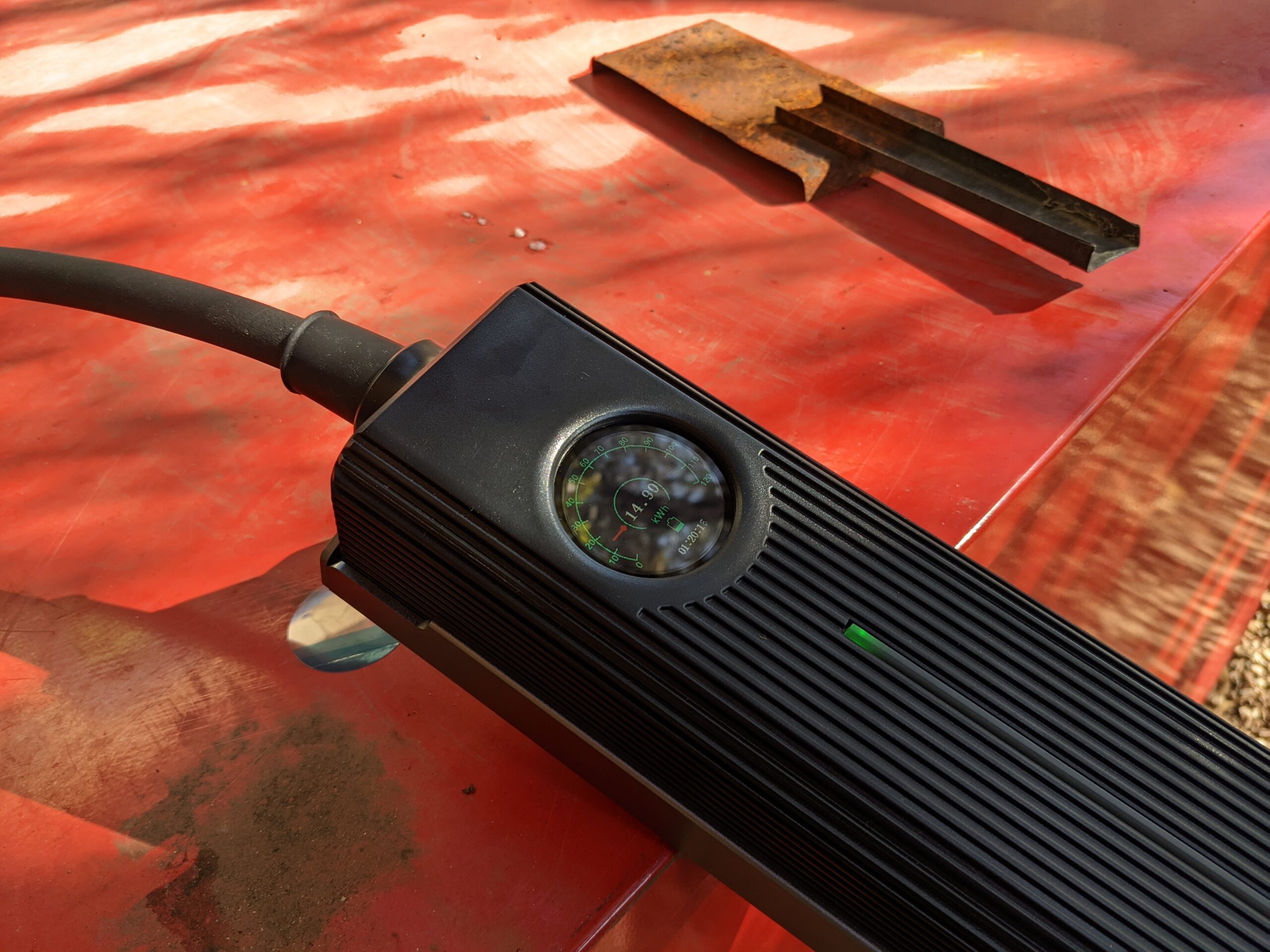
This was the first time we got to use our special multi-tailed charger from EVSE.com.au. As discussed in our preliminary piece, this lovely piece of equipment lets one charge an EV at maximum speed from any three-phase or single-phase outlet in Australia. Hooked up to the outlet on the side of the combination pub-and-post-office, the charger worked flawlessly the first time. The EV6 started charging at its max rate of 11 kW on AC power.
With four hours or so to kill, we set about exploring a town that seemed to have a permanent population somewhere below 60. Highlights included Dusty’s art gallery, where we got the tale of how he came to regularly export his drawings to European art dealers.


Eager to stretch our legs, we then decided to head to the local footy oval for a kick-around. James was impressively adept at booting the egg-shaped Aussie rules ball and was quickly punting sixers through the middle of the two big posts.
The real treat, though, was meeting a gang of paramotor enthusiasts flying across Australia. They’d used the oval as a landing strip and told us their story of overcoming adversity through the hobby.
We’d had a great afternoon, running around on the grass and making new friends. To us, the EV was bringing back the magic of a real road trip—one where the real stories are in the people you meet along the way.
On a typical road trip, many of us get out of the car just long enough to pay for fuel before diving back into our little cocoon and shutting away the world outside. An EV road trip, particularly this far out, is completely different. Scoring a charge means saying g’day and shaking hands to get access to a socket, and you’ve always got time for a chat while your car is drinking up the juice. It’s a funny thing, but when your mode of travel forces you to interact with others, you often find it’s a more rewarding experience than you could have imagined.
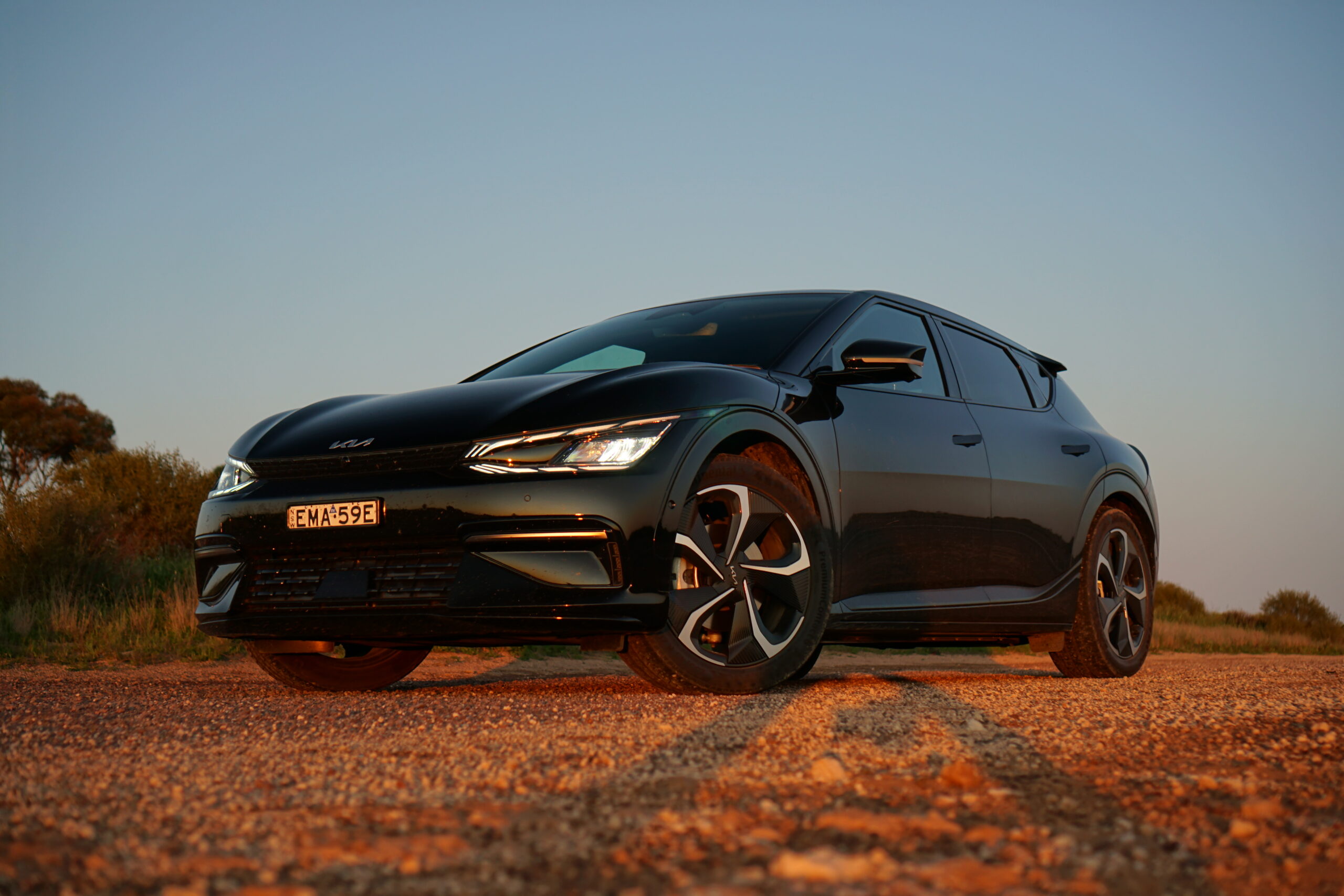
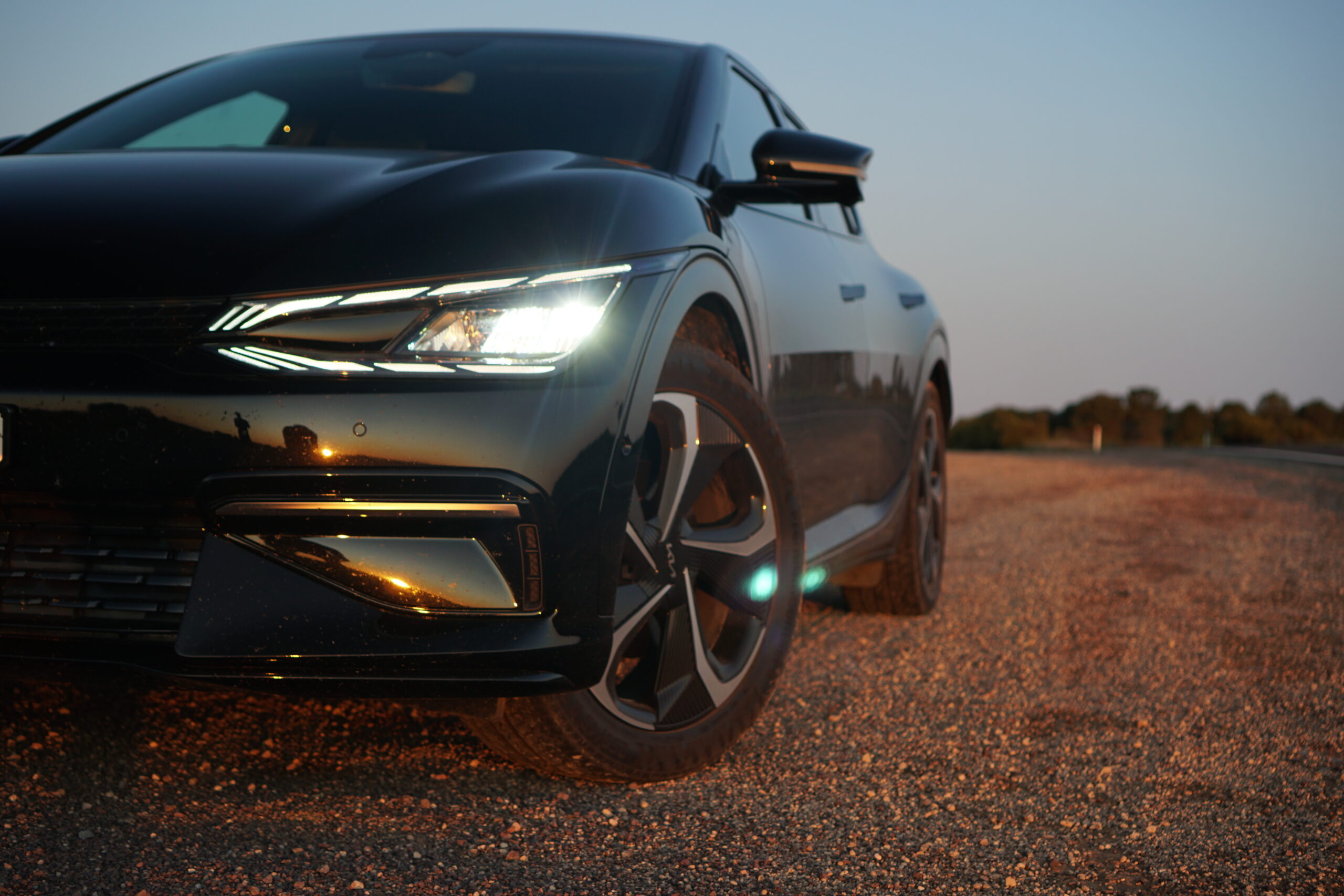
With the battery topped off with fresh electrons, we set out for the town of Penong, 131 miles away. There, an EV fan running the local caravan park awaited us, and again, we’d be relying on a three-phase socket to charge.
We took the journey cautiously, once more running part of the stint at 55 mph. At this pace, our buffer of 24 miles of range held out across the journey, and we made it into Penong just after nightfall. Our slowed pace was what pushed our drive into the night. We’d wanted to avoid this, as that’s when the wildlife is most active. With the sun down and the ‘roos out, you’re much more likely to wreck your car by bowling into Skippy out for his evening hop. In a stock EV6 without a bullbar, such an impact wouldn’t be pretty.
Regardless, the EV6 stayed true to its word, whirring us effortlessly into Penong just in time for dinner. We were again blessed with a remarkably good feed in a pub dining room that hasn’t been updated in 45 years at the bare minimum. If you’re in Penong, order the chicken. You won’t be disappointed.
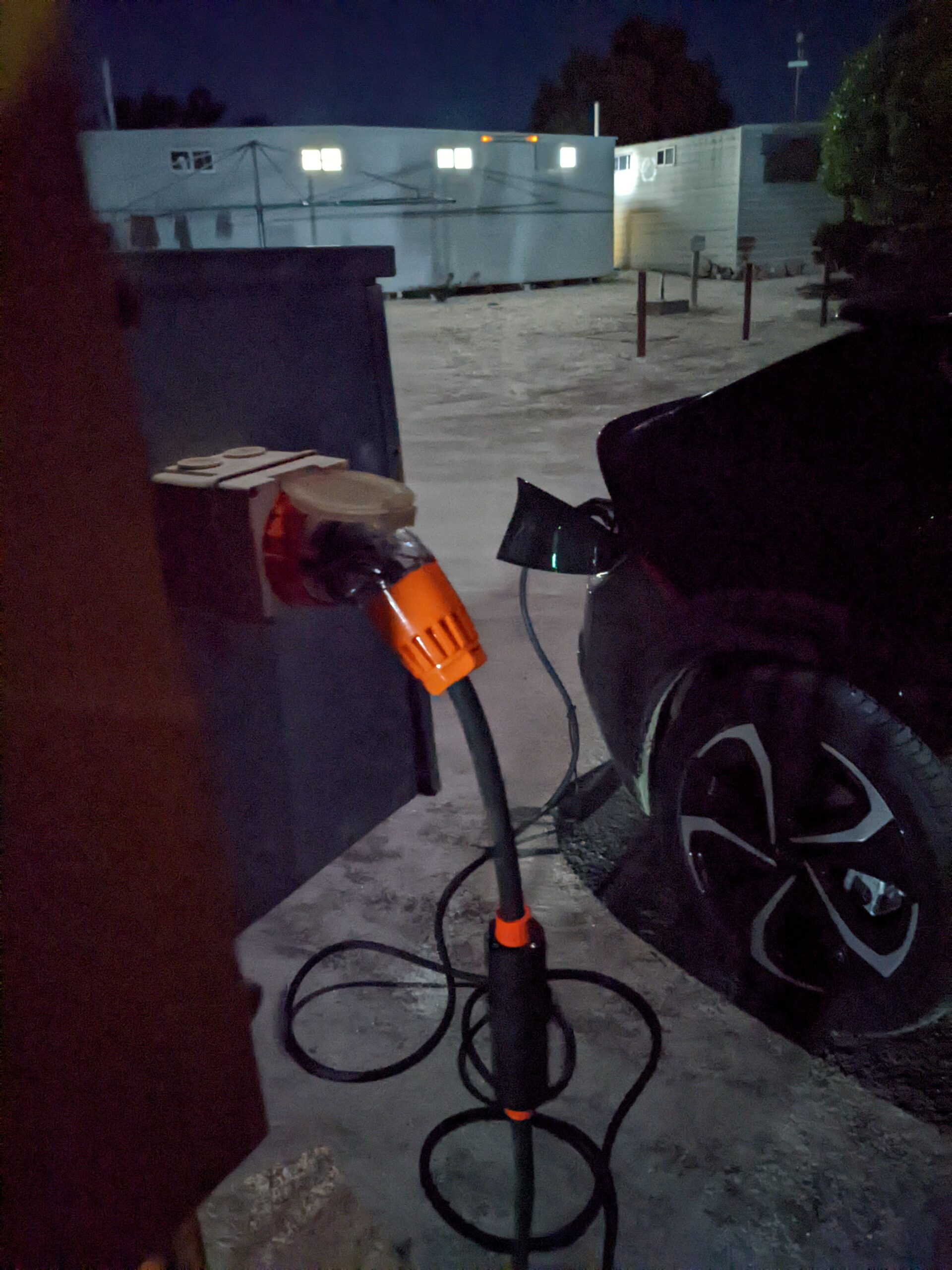
We then hopped across to the caravan park to secure our lodgings and score a charge. A quick chat with the proprietor told us we should call ahead to make sure the other chargers on our route were functional, and we were glad for the advice.
Crashing out for the night, we were equal parts excited and apprehensive to approach the Nullarbor Plain in the morning. Adventure awaited, and for all the miles we’d covered, James had yet to see a kangaroo. We’d had an easy run thus far, but the real slog lay ahead.

Beginning | Previous chapter | Next chapter
Got a tip? Email tips@thedrive.com